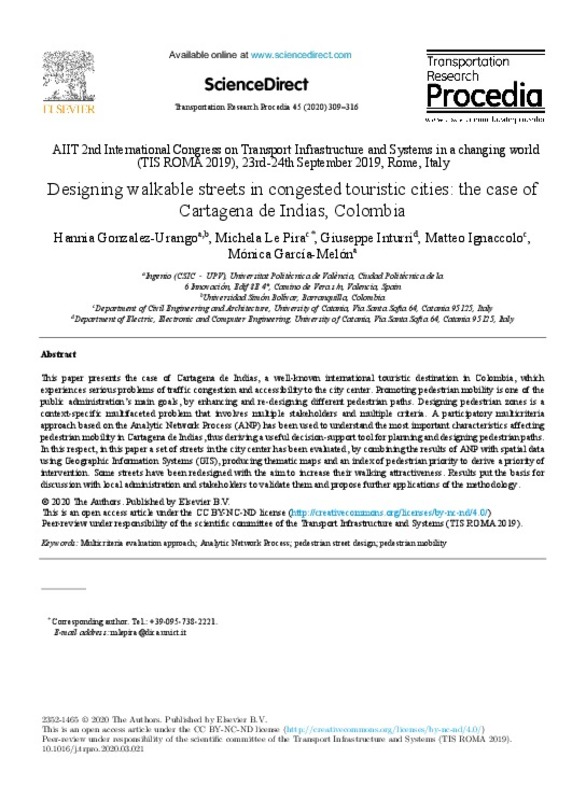JavaScript is disabled for your browser. Some features of this site may not work without it.
Buscar en RiuNet
Listar
Mi cuenta
Estadísticas
Ayuda RiuNet
Admin. UPV
Designing walkable streets in congested touristic cities: the case of Cartagena de Indias, Colombia
Mostrar el registro completo del ítem
Gonzalez-Urango, H.; Le Pira, M.; Inturri, G.; Ignaccolo, M.; García-Melón, M. (2020). Designing walkable streets in congested touristic cities: the case of Cartagena de Indias, Colombia. Transportation Research Procedia. 45:309-316. https://doi.org/10.1016/j.trpro.2020.03.021
Por favor, use este identificador para citar o enlazar este ítem: http://hdl.handle.net/10251/176151
Ficheros en el ítem
Metadatos del ítem
| Título: | Designing walkable streets in congested touristic cities: the case of Cartagena de Indias, Colombia | |
| Autor: | Le Pira, Michela Inturri, Giuseppe Ignaccolo, Matteo | |
| Entidad UPV: |
|
|
| Fecha difusión: |
|
|
| Resumen: |
[EN] This paper presents the case of Cartagena de Indias, a well-known international touristic destination in Colombia, which experiences serious problems of traffic congestion and accessibility to the city ...[+]
|
|
| Palabras clave: |
|
|
| Derechos de uso: | Reconocimiento - No comercial - Sin obra derivada (by-nc-nd) | |
| Fuente: |
|
|
| DOI: |
|
|
| Editorial: |
|
|
| Versión del editor: | https://doi.org/10.1016/j.trpro.2020.03.021 | |
| Título del congreso: |
|
|
| Lugar del congreso: |
|
|
| Fecha congreso: |
|
|
| Código del Proyecto: |
|
|
| Agradecimientos: |
|
|
| Tipo: |
|









